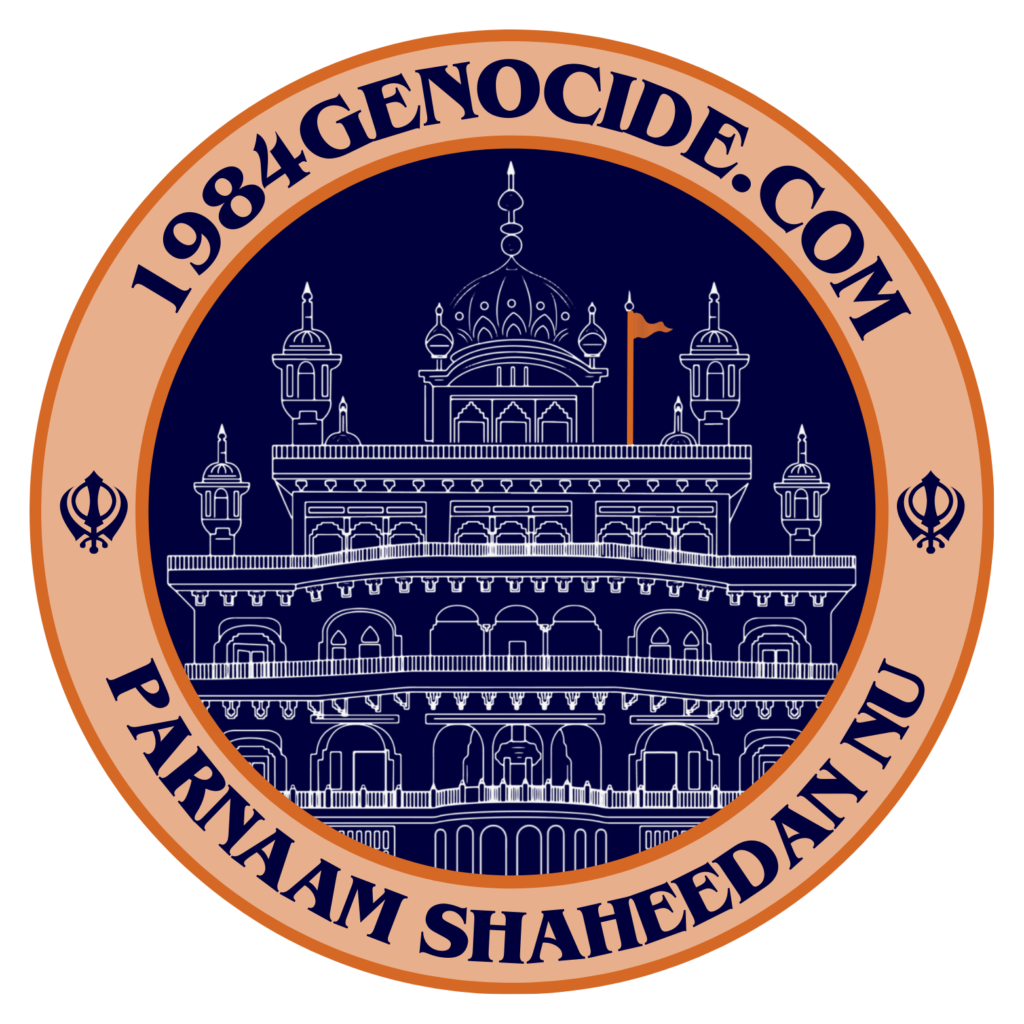
The Chattisinghpura Massacre took place on the evening of March 20, 2000. At the village of Chattisinghpura, Jammu, 20 Hindu militants arrived dressed in army uniforms. 35 Sikhs were singled out from Muslims and Hindus in the village, lined up, shot and killed. These Sikhs were targeted to prove to the Western countries and Bill Clinton that Pakistani Islamic extremists resided in Jammu & Kashmir and targeted Sikhs & Hindus. This tragedy aligned with the arrival of Bill Clinton, who blamed Hindu militants for the massacre.
The Hondh-Chillar massacre of about thirty-two Sikhs in a Haryana village in November 1984 by the Indian government was a part of the November Sikh genocide. A few members of the Indian National Congress party unsuccessfully attacked the village on November 1, 1984. On November 2, however, the village was visited by a truck that was loaded with roughly 200 men. Armed with gasoline and rods, they started physically abusing the Sikhs. Sikh villagers were burned alive and mauled to death by the Congressmen for more than three hours. They set the Gurdwara and residences of the Sikhs on fire. The local police did not intervene in the massacre, but the villagers were successfully able to defend themselves.
The Pataudi Massacre referred to mobs led by Lalit Maken, who set fire to the Gurdwara in Pataudi town on November 1, 1984. The armed groups torched Sikh houses in the villages and went on the rampage across the town. The following day, rioters came again and began to set individuals on fire. While many Sikhs managed to flee, 17 were taken prisoner by crowds who then killed them and set their bodies on fire to hide any trace. Despite the survivors filing numerous police reports, none of the attackers were apprehended or brought to justice.
On November 1, 1984, the city was thrown into panic when a local Congress leader led the mobs. When the armed mobs tore through the town and set fire to Sikh homes within the city, numerous family members were brutally killed with over 50 homicides in the district. Over 300 homes, businesses, and factories were set on fire and pillaged. Sikhs were sent to a camp under Army curfew the next day. The Sikhs were forcibly ordered to leave the camp the following day, and when they did, they saw the harm done to their houses. Since the police did not submit reports, many cases remain undocumented and unresolved.
D.G.P. Ribeiro, K.P.S. Gill and other government officials used heinous tactics to defame Kharkus. Agents would disguise themselves, pretend to take shelter in the homes of Sikhs and harass the women of the house. Many witnesses reported rapes. Police would later arrive to arrest the residents who sheltered them. Blackcats disguised as Kharkus would kill police officers, with the intention of turning public opinion against the Sikh Movement. To target and dissuade young, educated Sikhs from joining the movement, there were several blackcats enrolled in colleges and universities. Upon the movement’s defeat, the blackcats persisted in their theft, looting, and rapes.
Operation Shudhee Karan aimed to alter the genetic makeup of the Sikhs. Gobind Ram and his subordinate butcher officers systematically raped Sikh females in detention centers throughout Punjab with impunity. Sikh women became the target of mental and physical torture by Indian Security forces. Bhai Gurjant Singh Budhsinghwala and Bhai Jugraj Singh Toofan brought Gobind Ram to justice.
After the attack on the panth in 1984, the Indian Government wanted to demolish the idea of Sikh sovereignty. The government warranted police brutality and the extrajudicial tortures & encounters on Sikh youth. During the period of Kharku Sangarsh, Punjab police officers kidnapped and illegally encountered hundreds of thousands of Sikh youth, and to this day, their families have not received justice.
When his colleagues disappeared without explanation, Bhai Jaswant Singh Khalra began his research and investigation. He was responsible for uncovering these extrajudicial killings and disappearances. He discovered documents in several cities containing the names, ages and addresses of Sikhs who were picked up and killed in police custody. He corroborated these files with municipality records documenting the quantities of materials used in the cremations of unidentified dead bodies. By cross-referencing the materials used and cost, he uncovered more than 25,000 unlawful cremations paid for by the Punjab Police and municipal committees. Punjab Police, led by S.S.P. Swaran Singh Ghotna, abducted him from his home on September 6, 1995. Eyewitness testimony states that he was tortured and killed in police custody.